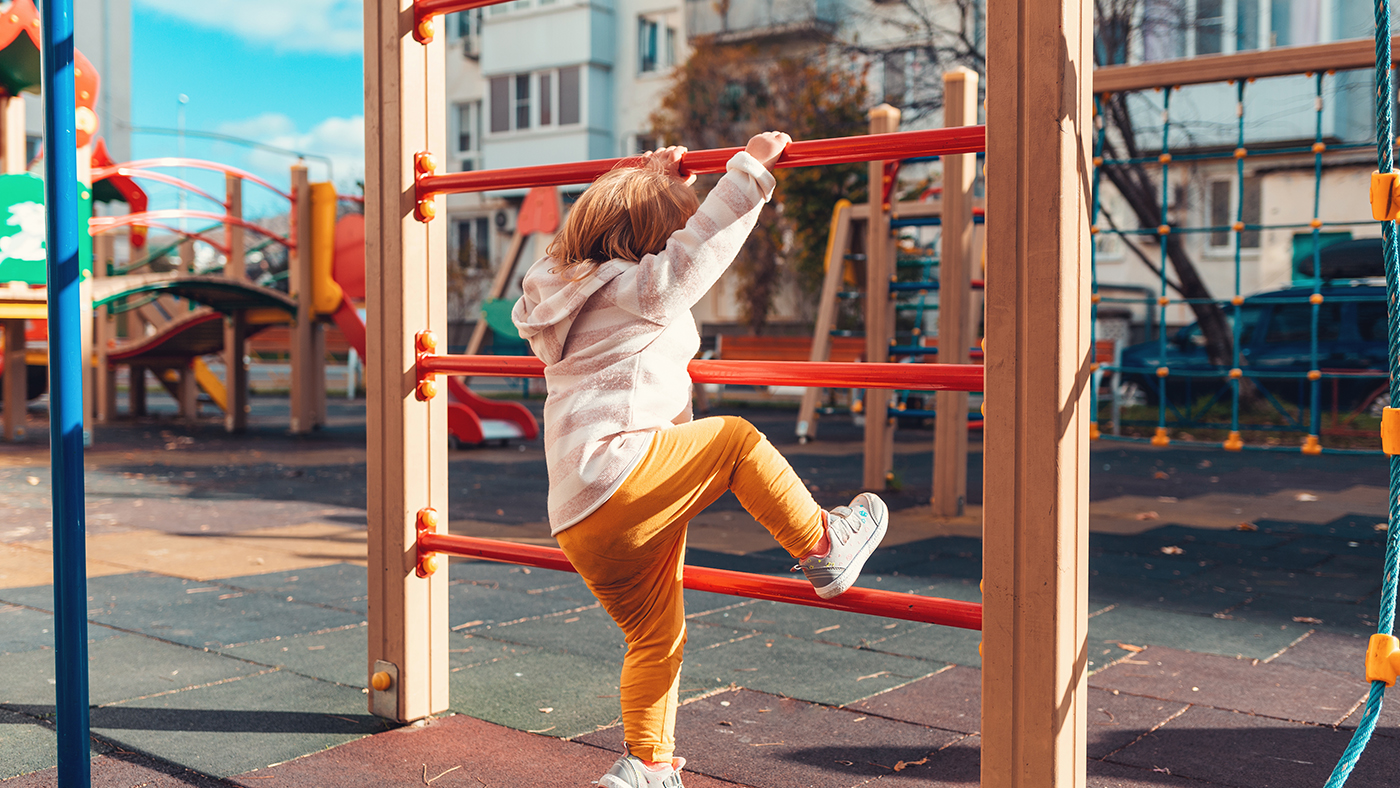Can confidently climb up a small ladder at a playground

Your toddler will have been experimenting with many gross motor movements and they are most likely able to manage climbing the stairs all by themselves. You may notice that they still need some help to get back downstairs. Climbing is an activity that can be very appealing for young children and you may find them trying to climb all over furniture, along rails, onto windowsills and out of the bath.
The development of action
The central nervous system has been working since birth to develop a series of movement and action systems. It works with the brain to figure out how the body can interact with its environment. [1] When your toddler was a baby, they started to explore the action of reaching, little did they know that this action would be used for climbing as they grew older. At that time, your baby was intentionally trying to reach out for, and grab, objects close to them; they were planning their movements. These early interactions helped their brain and body to shape actions that support them to fulfil active tasks. [1]
When toddlers climb, there are strong links with perception, cognition and motivation. Babies, toddlers and children have an intrinsic desire to explore and master activities: they often do this with little or no reward for themselves, however they are developing new neuronal pathways, and gaining improved perception which motivates them to explore new modes of action. [1]
Balance coordination and muscle strength
When toddlers are learning to climb ladders confidently, they require good balance, an ability to alternate their legs, coordinate their arms and grip with their hands and feet. They need to be able to organise these movement patterns whilst maintaining stability and balance. In addition, your toddler should now be able to deal with the shift in weight as one leg propels the body upwards. At this stage, your toddler will find it easier to go up ladders, this is largely due to most of the movement using strength in their legs to push the body up. When the body travels upwards, the pull of gravity gives them more time to place their arms and legs in position. [2]
Problem-solving skills
Now your toddler’s abilities in critical thinking are starting to develop, they are much more able to assess how they will manage a task. When they approach a climbing challenge, skills in thinking about where to place their hands, how to move their legs and how to push up need careful consideration. It is at this stage of development that they are more able to make these decisions and be willing to give new challenges a go.
Social information
Toddlers rely on social information provided by adults to ascertain whether they are at risk or not. When new skills are being acquired that involve risky play, it is natural for a toddler to look to an adult for information as to whether they should proceed or not. Not all children share the desire to climb, some prefer to stand and watch. By creating safe spaces for them to climb, they may find that their confidence is boosted.
What next
Your toddler will start to descend stairs and ladders independently. They will begin to figure out how to manage the movements whilst gravity helps pull them downwards.
References:
[1] C. Von Hofsten (2004) Article: An action perspective on motor development. TRENDS in Cognitive Sciences Vol.8 No.6 June 2004. Available from Science Direct.
[2] Adolph, K. E. & Berger, S. E. (2015). Physical and motor development. In M. H. Bornstein & M. E. Lamb (Eds.), Developmental science: An advanced textbook, (7th ed., pp. 261-333). New York: Psychology Press/Taylor & Francis.